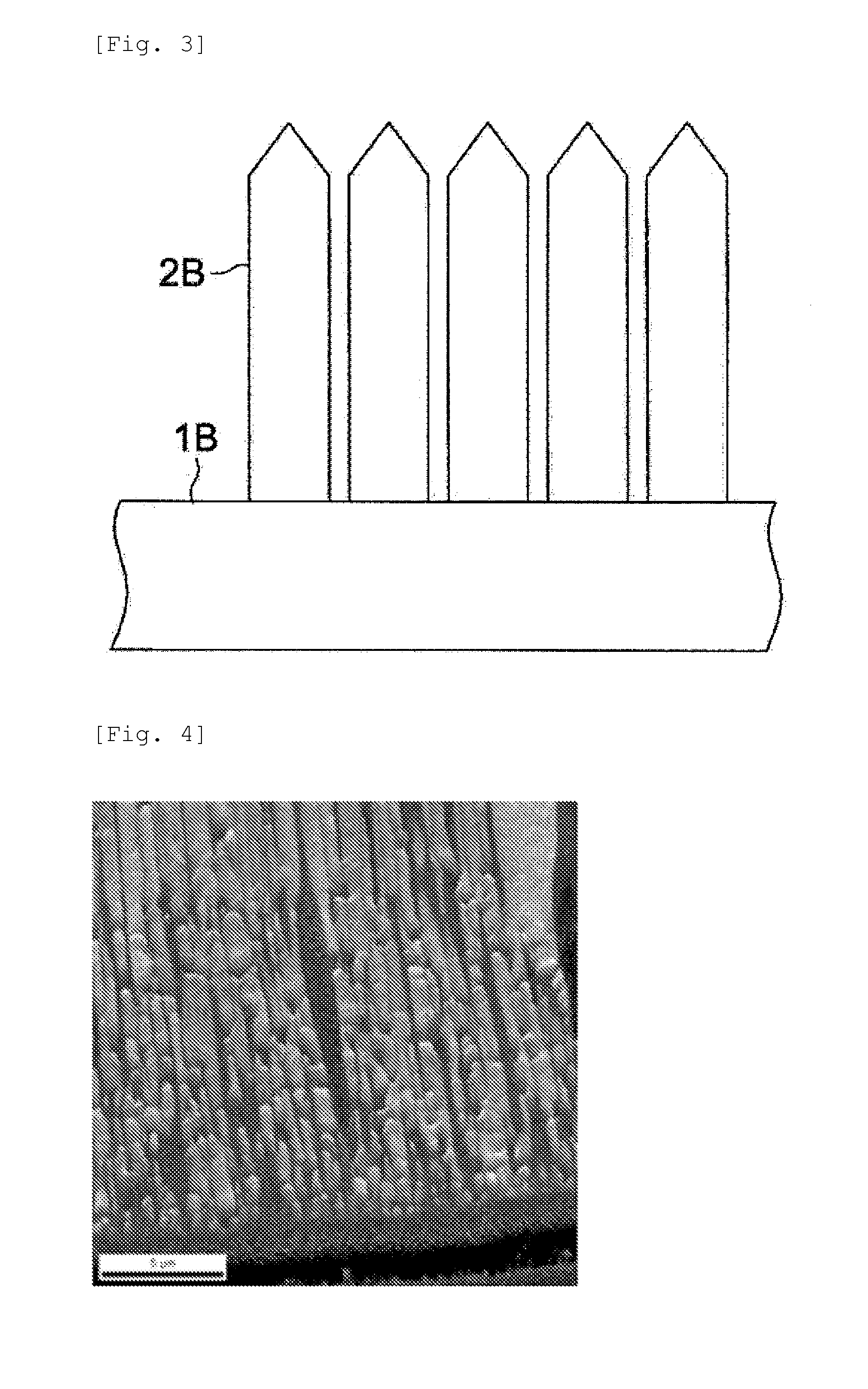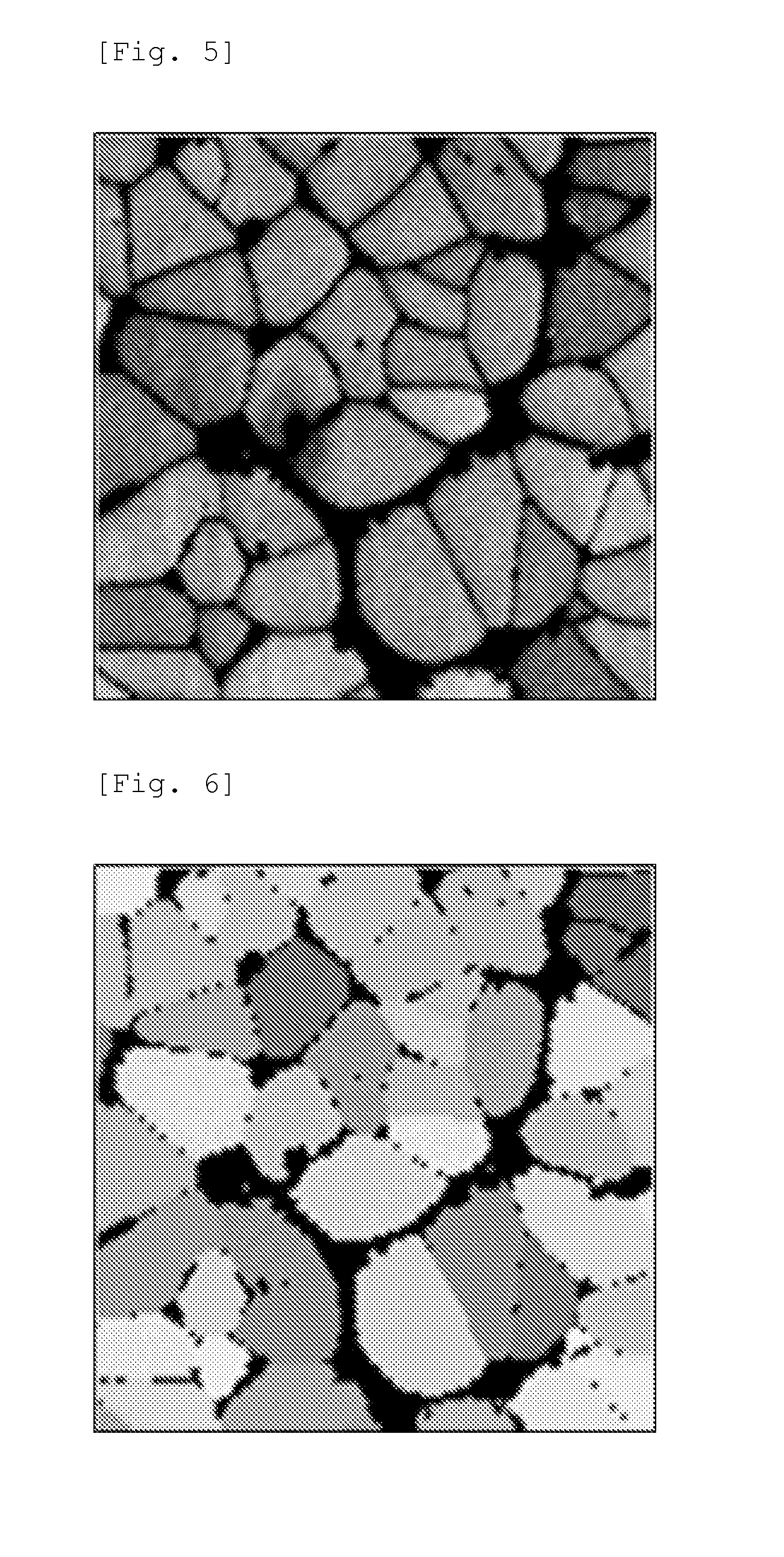Radiation image conversion panel
a technology of conversion panel and radiation image, which is applied in the direction of conversion screen, instruments, nuclear engineering, etc., can solve the problems of insufficient understanding, and achieve the effect of excellent adhesion, excellent luminance and sharpness
- Summary
- Abstract
- Description
- Claims
- Application Information
AI Technical Summary
Benefits of technology
Problems solved by technology
Method used
Image
Examples
example 1
[0128]On a polyimide film (produced by Ube Industries. LTD.; trademark: UPILEX; film thicknesses: 125 μm) as a support, silver as a reflection layer was formed by sputtering method. As an under coating layer, 10 parts by weight of curing agent (HMDI) was blended to 100 parts by weight of polyester (produced by Toyobo Co.; trademark: Vylon 300; glass transition temperature (Tg): 7° C.) and titanium oxide was blended thereto, then 50 parts by weight of toluene and 50 parts by weight of methyl ethyl ketone with respect to 100 parts by weight of solid content were added as a solvent and the mixture was kneaded to obtain a coating solution, which was applied to the polyimide surface by spin coat and dried.
[0129]In this case, the average coating thickness of the under coating layer was 50 μm, and the elastic modulus in a initial substrate temperature measured by nanoindentation method for the under coating layer was 1.1 GPa.
[0130]Cesium iodide and an activator (thallium iodide) were depos...
example 2
[0134]In Example 1, as an under coating layer, 10 parts by weight of curing agent (HMDI) was blended to 100 parts by weight of polyester (produced by Toyobo Co.; trademark: Vylon 780; Tg: 35° C.) and titanium oxide was blended thereto, then 50 parts by weight of toluene and 50 parts by weight of methyl ethyl ketone with respect to 100 parts by weight of solid content were added as a solvent and the mixture was kneaded to obtain a coating solution, which was applied to the polyimide surface by spin coat and dried.
[0135]In this case, the average coating thickness of the under coating layer was 50 μm, and the elastic modulus in a initial substrate temperature measured by nanoindentation method for the under coating layer was 10 GPa.
[0136]A radiation image conversion panel was produced by the same method as in Example 1 except for the above-described and that the initial substrate temperatures was set to 20° C.
example 3
[0137]In Example 1, as an under coating layer, 10 parts by weight of curing agent (HMDI) was blended to 100 parts by weight of polyester (produced by Toyobo Co.; trademark: Vylon 630), then 50 parts by weight of toluene and 50 parts by weight of methyl ethyl ketone with respect to 100 parts by weight of solid content were added as a solvent and the mixture was kneaded to obtain a coating solution, which was applied to the polyimide by spin coat and dried.
[0138]In this case, the average coating thickness of the under coating layer was 1 μm, and the elastic modulus in a initial substrate temperature measured by nanoindentation method for the under coating layer was 6 GPa.
[0139]A radiation image conversion panel was produced by the same method as in Example 1 except for the above-described and that the initial substrate temperatures was set to 50° C.
PUM
| Property | Measurement | Unit |
|---|---|---|
| diameter | aaaaa | aaaaa |
| thickness | aaaaa | aaaaa |
| thickness | aaaaa | aaaaa |
Abstract
Description
Claims
Application Information
 Login to View More
Login to View More - R&D
- Intellectual Property
- Life Sciences
- Materials
- Tech Scout
- Unparalleled Data Quality
- Higher Quality Content
- 60% Fewer Hallucinations
Browse by: Latest US Patents, China's latest patents, Technical Efficacy Thesaurus, Application Domain, Technology Topic, Popular Technical Reports.
© 2025 PatSnap. All rights reserved.Legal|Privacy policy|Modern Slavery Act Transparency Statement|Sitemap|About US| Contact US: help@patsnap.com



